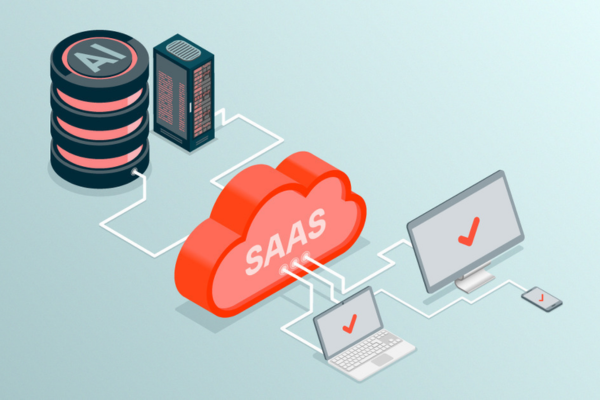Table Of Contents
How Is AI Changing the Way SaaS Companies Manage Billing: Trends and Impacts
AI has been sneaking into SaaS billing in ways that are hard to miss now. Billing used to be this rigid, one-size-fits-all setup—lots of spreadsheets, lots of manual corrections.
Today? The AI revolution in SaaS billing makes the whole thing quicker, more accurate, and honestly a lot more customer-friendly.
Instead of charging everyone the same flat rate, billing systems can tweak prices based on actual usage, the value delivered, or even how someone tends to use the product.
That way, companies aren’t accidentally overcharging the casual users while losing money on the power users. The real win here is flexibility. Businesses aren’t locked into static tiers anymore.
Pricing can grow—or shrink—with customer needs. Tools like Zenskar help automate subscription tracking, keep forecasts realistic, and even handle tricky contracts without someone pulling an all-nighter with Excel.
The trade-off is simple: less grunt work, more time to focus on the business itself. Another big shift? Personalization. AI can draft invoices that feel tailored to a single customer, apply discounts that actually make sense for their usage, or send reminders at just the right moment.
When you mix automation with predictive smarts, billing stops being this heavy back-office process and turns into something that adapts right alongside your company.
Key Takeaways
- AI makes usage-based billing smoother and more balanced.
- Automation clears out most of the repetitive work.
- Predictive analytics helps keep customers around longer.
The AI Revolution In SaaS Billing: How Is It Changing The Process?
Subscription billing has never been simple, but AI makes it easier to adjust on the fly. Machine learning can tweak prices in real time and notice weird billing patterns.
Also, it can predict customer choices with way more accuracy than a manual review. That keeps revenue flowing without drifting away from what’s really happening with your customers.
1. From Manual To Automated Billing Processes
Not too long ago, invoicing meant hours of typing, reconciling numbers, and chasing down payments. AI flipped that script. Platforms like BluIQ or BluLogix can pump out invoices, monitor payments, and handle renewals almost automatically.
It’s not just faster—it’s cleaner. Charges actually line up with usage and contract terms without someone second-guessing every line item.
And since automation scales easily, finance teams don’t need to balloon just because transaction counts went up. On top of that, revenue recognition is standardized, which used to eat up a lot of time and energy.
2. Predictive Analytics For Revenue Growth
Forecasting is where AI really shines. By crunching old billing data, tracking churn, and mapping out usage patterns, systems can spot customers who might be on the way out—and give businesses a chance to step in before the cancellation notice shows up.
But it’s not only about preventing losses. Predictive analytics can also highlight which pricing tiers need a rethink, where discounts could boost loyalty, or when to test new offers.
Some billing platforms even hook directly into marketing tools, so if a customer’s behavior suggests they’re drifting, campaigns kick off automatically. Instead of waiting for the revenue dip to show up in reports, you can get ahead of it.
3. Dynamic Pricing And Usage-Based Billing
Static pricing doesn’t cut it anymore, especially with usage-based SaaS. The AI revolution in SaaS billing makes dynamic pricing possible by adjusting charges based on activity, outcomes, or plain old consumption.
That’s huge for companies where one customer barely uses the service while another is hammering it nonstop.
Usage-based billing keeps everything fair. Customers pay for what they actually use, and businesses avoid the risk of undercharging heavy users. Plus, the whole process is tracked and applied in real time, leaving less room for human error.
Here’s the quick breakdown:
| Billing Model | AI Capability | Benefit to You |
| Per-Seat Licensing | Usage tracking & churn signals | More predictable revenue |
| Usage-Based Billing | Real-time monitoring | Scales smoothly with usage |
| Value-Based Pricing | Outcome analytics | Charges tied to delivered value |
4. Enhancing Fraud Detection And Compliance
Billing isn’t just about the math—it’s also about security. AI is handy at flagging odd spikes, strange payments, or activity that just doesn’t look right. Catching those issues early saves money and lowers fraud risks.
It also tightens compliance. Automated checks keep invoices aligned with tax laws, recognition standards, and reporting requirements. Since the system does it consistently, there’s less room for human slip-ups. That means a billing setup that’s not only accurate but reliable too.
5. Personalization And Customer-Centric Billing Innovations
AI’s biggest contribution might be how it makes billing more customer-friendly. Instead of treating everyone the same, companies can shape plans around how individuals actually use the product or when they’re most active.
Invoices look more relevant, and payment terms feel less rigid.
Personalized Pricing Strategies and Discounts
Discounting used to be guesswork. Now, AI makes it practical. Spotting trends in customer behavior can suggest offers that actually work. A few examples:
| Customer Behavior | AI Action | Outcome |
| High ongoing usage | Offer a volume discount | Stronger loyalty |
| Activity decline | Limited-time discount | Reduced churn risk |
| Repeated late pay | Recommend a smaller plan | Fewer payment issues |
The ripple effect is stability. Happy customers, steady revenue, fewer surprises.
AI-Powered Subscription Management
Upgrades, downgrades, renewals—usually a pain, but AI takes the sting out. Chatbots or automated assistants can handle a lot of it. If a customer pushes past their plan limits, the system can suggest an upgrade right there, no delay.
Failed payments? AI spots them early and nudges the customer before it snowballs. Clear, timely reminders cut down on disputes and build trust. Altogether, billing becomes less of a headache for both sides.
Improving Customer Retention and Satisfaction
Retention is where AI pays off long-term. By tracking billing history, usage, and even subtle patterns, it can flag when a customer might be unhappy before they walk away. That gives businesses time to react—with tailored plans, discounts, or even service tweaks.
Pair predictive insights with a human touch, and you’ve got a proactive retention strategy. The result: steadier revenue and longer relationships with the people using your product.
Making Your Work Easier
AI isn’t some “nice to have” anymore in SaaS billing—it’s moving into the core. With real-time tracking, automation, and predictive forecasting, the errors shrink, pricing aligns with value, and the AI revolution in SaaS billing stops dragging teams down.
The real power is flexibility. Companies can juggle subscription models, usage-based structures, or hybrids without redesigning the whole system every time. It’s easier to adapt to market shifts while keeping billing accurate and transparent.
At the end of the day, AI-powered billing means efficiency, accuracy, and a smoother customer experience. For SaaS companies, that’s not just fewer headaches—it’s a stronger base for scaling.














